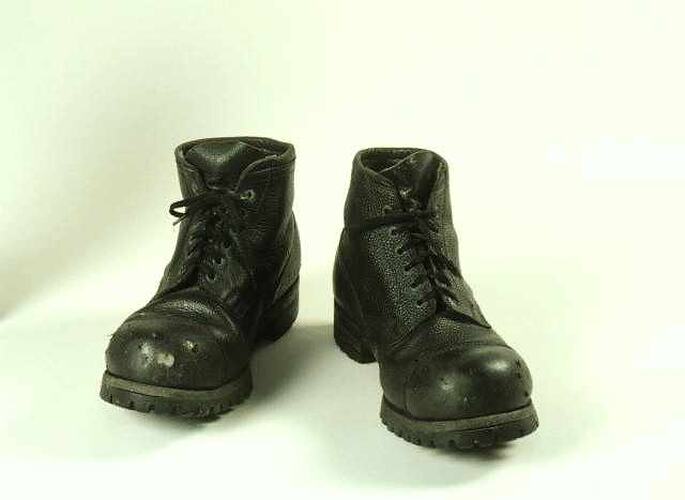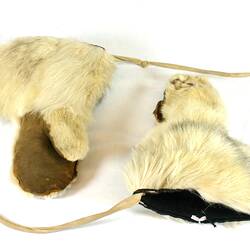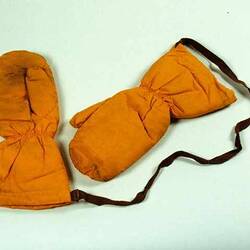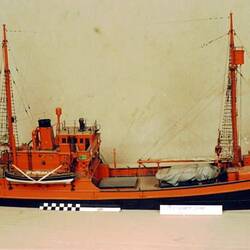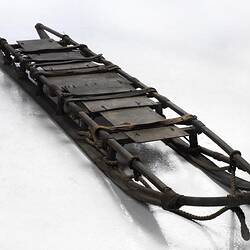Summary
Black British Army leather boots with cleated soles, worn by Dr Phillip Law in Antarctica between 1962 and 1966 predominantly at Heard Island and Macquarie Island, but also in summer for coastal work in Antarctica.
This is part of Museum Victoria's collection of artefacts from the post-war era of scientific exploration of Antarctica.
Physical Description
Black boots with large internal volumes to accommodate thick socks and have cleated rubber soles. They are made using heavy quality Scottish zug leather that has high waterproof qualities. Inside, the boots have plastic mesh linings. Black cotton laces are used. There are many thick screws used in the rubber soles. The lining may be of nylon mesh, not plastic mesh: examination needed.
Significance
Protective clothing is extremely significant for Antarctic exploration. In the early days of ANARE, clothing specifically designed for Antarctic conditions was not available. Instead clothing designed for similar conditions needed to be sourced such as mountaineering or Army uses. ANARE relied heavily on Australian, British and US surplus military clothing.
The boots were used predominantly at Heard Island and Macquarie Island, but also in summer for coastal work in Antarctic parts by parties during expedition forays. These areas have a wet/cold climate, which is substantially more challenging than the predominantly dry/cold climate of the Anatarctic continent.
Footwear for such climates needed to be waterproof but if the boots were completely waterproof then sweating would occur. The boots must be able to breath, but be impervious to outside water. The British wet/cold boots were remarkably effective. However the boots were not useful at temperatures below about -20°C, as they were not insulated enough to keep feet warm.
More Information
-
Collection Names
-
Collecting Areas
-
Acquisition Information
Donation from Dr Phillip G. Law AC CBE - Australian Antarctic Division, 02 Feb 1993
-
Date Used
1962-1966
These items were used by Phillip Law between 1962-1966. His previous pair of boots were worn out (5 years). They were first used from 1950-today, with heavy wool socks. -
Manufacturer
-
Place & Date Used
Macquarie Island, Australian Antarctic Territory, Antarctica, 1950-1993
These items were used by Phillip Law between 1962-1966. His previous pair of boots were worn out (5 years). They were first used from 1950-today, with heavy wool socks. -
User
Dr Phillip G. Law AC CBE - Australian Antarctic Division, Antarctica
-
Inscriptions
Stamped on sole: MADE IN/ITSHIDE/ENGLAND/[ILLEGIBLE]/COMMANDO.
-
Classification
-
Category
-
Discipline
-
Type of item
-
overall dimensions
11.7 cm (Length), 31 cm (Width), 19 cm (Height)
-
Exhibition Collection Management
117 mm (Length), 310 mm (Width), 190 mm (Height)
-
Dimensions
310 mm (Length), 120 mm (Width), 290 mm (Height)
Measurement From Conservation. Measuring Method: these are the measurements of one boot
-
Keywords
